Today’s Walk: Ennerdale Bridge to Rosthwaite (07/August)
Stayed at Fox and Hounds, Ennerdale Bridge. Rating Expensive rates (food at the restaurant also was expensive) and an average stay – together not a good combination. Co-walkers mentioned a nearby pub which offered accommodation as well was a much better and cheaper choice.
Before I describe today’s walk, let me start with my 8 step planning process for a Coast to Coast Walk.
Step 1: Find a reason
Everyone goes for a long walk for different reasons. Some does it for getting away from the rigors of life. Some does it to enjoy nature and explore new places. Some does it as an exercise. Some does it to loose weight. And some does to drinking all the beers that are available – like Dr. Steven Sullivan.
What is your reason?
Step 2: Check out your personality
What sort of a personality do you have and what sort of a holiday do you want? On one extreme are people who would you like to sit on the beach quietly and read a book. On the other extreme are the skydivers who needs the adrenaline rush. If you are neither one of this, and is in the middle, walking/ trekking may be for you. Here is a low strain activity (at least I thought so, but wasn’t the case), that helps you to enjoy new sceneries every minute of the walk (and meet a few like minded people each day). Last thirty minutes doesn’t look like the next thirty minutes (like being on a beach) and the fun doesn’t just last 30 seconds (like the skydiver).
Step 3: Look at the mirror (That’s where I started)
If walk for you means walking from your cubicle to the meeting room or from your car to the supermarket, Coast to Coast walk isn’t for you (yet). You need at least 3 months of preparation (don’t be disheartened – I needed 10 months of preparation). You must be physically prepared where you can walk 20 kilometres each day on a weekend for this walk. Make sure you have worn (“broken in”) your trekking shoes for a few weeks and there are no more cracked skins and blisters.
If you are a “good walker” you can easily cover the Coast to Coast walk 10 days - some one has run the whole distance in 36 hours! Ordinary mortals like me need 14 days. Some take 15 with a day break in the middle – after all you need time to wash your clothes and do a foot massage.
Despite all these advices which I am giving out like an expert, on day two of my walk all I can think is My Foot - it pains. Why did I get into this?
Step 4: Where to start (Look at Wainwright and Web)
In this 21st century, there are a lot of web resources available to help you prepare for this trip. But every one should to start with Alfred Wainright’s book before anything else. Though the original book is many decades old, it has been refreshed to keep up with times (and ever changing landscape and land zoning rules). A very good amount of information is available in the web as well which is continuously being updated by walkers all around the world.
Step 5: When to Walk
Britain is defined as a country with Four seasons in one day! Even then try not to do this from November to March unless otherwise you are from the poles. It is way too cold. July and August are peak periods (but still there is too much of land area to make you feel lonely), so book the hotels in advance.
Step 6: Groupie or Solo
In a group of friends and family you find happiness and safety; being alone you finds solitude.
I would have loved to walk with my family. But until my kids grow up it is not going to happen. Yeah, my 5 year old son can walk 5 kilometres. After that I have to carry him (I tried it once).
Step 7: Accommodation
Here you have three choices:
1) A well planned trip with accommodation pre-booked is the safest option (like me)
2) Get accommodation on the fly when you reach a place which you like is for the courageous. However it is not advised during busy periods as all accommodation on route will be fully booked and you will sleep in the car park – if you can find the car park.
3) Carry your accommodation (tent) in your back pack is for the stronger ones. Camping sites are available on route for nominal fees. Enough wild space too is available!
I am sure I am not strong enough to carry heavy backpacks of 20Kgs and walk for two weeks or so - like some of the people I meet on the way – they make it look so easy. So I decided to use the Sherpa Van service for this (other services like packhorse is also available). Each day they move across my luggage from hotel to hotel (or more accurate Inn to Inn) for about £7. I just need to carry my backpack with essentials – Netbook and its cables, a notebook and some pens, a book to read, Vado HD, Digital Camera, extra memory for camera, extra power pack to provide juice for my phone, snacks, painkiller (just in case!) and water, water and more water.
Step 8: Plan your expenses
Expenses for this trip come in 6 forms:
1) Stuff to buy in preparation for the trip. This includes waterproof bags, rain coat, trekking shoes, compass, books, maps and other accessories
2) Airfare. Thanks to all those Frequent Flyer miles, I just paid taxes – which also costs as much as the price of a low cost air ticket!
3) Rail tickets. I definitely would recommend a 4 day Britrail England flexi-pass which allows 4 days of (unlimited) travel within 2 months. This allows me the following trips - Heathrow to London Paddington on Heathrow Express (day 1), Euston station in London to St Bees via Manchester (day 2), return to London from Robin Hoods bay (day 3), London to Heathrow airport (day 4). This pass works out much cheaper than the individual tickets and also offers much more flexibility (want to get down on the way and take a short break before continuing?).
4) Sherpa Van luggage mover service (£7 x 14 days) + Hotel booking service.
5) Accommodation charges – on an average £30 a night for a single en-suite (bathroom and toilet attached) room. Prices starts as low as £20 and can go up to £60. Directly paid at the hotels/ inns/ farm houses.
6) Food and drinks – typically come to £10 a stop. Breakfast is generally included (after all it is called B&B) as a part of accommodation
Day so far:
Last evening at the end of the walk, I met a couple of fellow walkers, Gary and Peter. It is astonishing how walkers form a quick bond among themselves even though they have never met before and know very little of each other. After all, there are only a few of them crazy enough to do such long walks, it is natural that they bond together. After a couple of beers, three of us, one from England, one from New Zealand and one from Singapore decide to walk together the next day.
Early morning we started from Ennerdale Bridge to reach Ennerdale Water which is the first of many lakes on the way. The first view of the lake itself is breathtaking and gives you an idea how beautiful would the upcoming walk in the Lake Districts be.
The walk along the south edges of the lake is tough, with some serious climbing on rocky tracks. But the beauty of the place takes your mind away from that effort. Somewhere near the highest point as you walk besides the lake, is the Robin Hood’s Chair, which is a rock that juts out.
Robin Hood’s Chair is just one of the many Robin Hood connections on the way (remember at the end of the walk is Robin Hood’s Bay!). There is even a Robin Hood’s Grave on the way. Folklore, mythology and walker’s imagination is a lethal combination and is not surprising such Chair’s and Grave’s exist.
After the climb down on the south end of the lake is River Liza. After crossing the river, and a long walk parallel to the river comes Black Sail Hut (Black Sail Youth Hostel).
In between very tall hills (or was it mountains?), Black Sail Hut lies in a dramatic location. Sitting down in front of the hill with a few other walkers and having a relaxed snack, I didn’t have a clue what the next few hours held for me. That was the good thing.
Then came the steepest and most dangerous climb of my life.
In absolute terms, it wasn’t a big climb, just 650 metres. In fact during the rest of the walk, I did climb even higher hills. But this being the first serious climb I wasn’t prepared for it.
For a while the climb is through randomly laid out rocky steps. Occasionally the track fades away and one needs to be careful about every step (and not to miss one).
Half way through the walk many things went wrong. Very strong and cold wind was hitting my face, while my body is overheating as I was wearing a thick jacket. Being the second day of my walk (and due to my inexperience) I had all sort of things in my bag. The weight wasn’t an issue on the first two days, but during this climb, it was a real issue; it was dragging me down. And the most terrifying part is that the climb was very steep and has no safety barrier. One wrong step and it is half a kilometre fall straight down from the hill and having fear of heights also did not help!
I was really stuck half way through. Too tired and terrified to climb up and absolutely now way to climb down. All of a sudden, ten months of practice meant nothing.
I came for a Coast to Coast Walk, and not a Coast to Coast Climb.
That’s when the amazing thing happened. Along from Gary and Peter, half a dozen walkers whom I haven’t ever met before today, was encouraging and motivating me to climb up further and further. Tips like “take the jacket off”, “sip a little bit water”, “don’t look down”, “breathe steadily; breathe in through your nose and breathe out thorough your mouth”, “you are almost there” came in quick succession. Gary even offered me to carry my shoulder bag. Within 45 minutes I am at the top!
The sense of achievement has never been greater. And the views of the sea shore at St. Bees from the top, though many miles away, was an adequate compensation for all the effort.
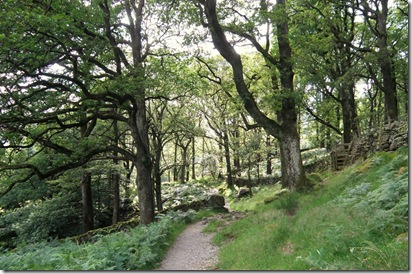 After a few smaller ups and downs comes the Honsiter Slate Mine still producing high quality slates. Then comes a steep climb to Longthwaite and a short gentle walk by the side of a small river to today’s destination, Rosthwaite.
After a few smaller ups and downs comes the Honsiter Slate Mine still producing high quality slates. Then comes a steep climb to Longthwaite and a short gentle walk by the side of a small river to today’s destination, Rosthwaite.
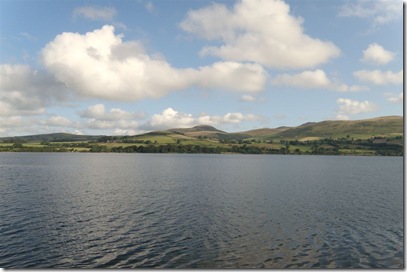
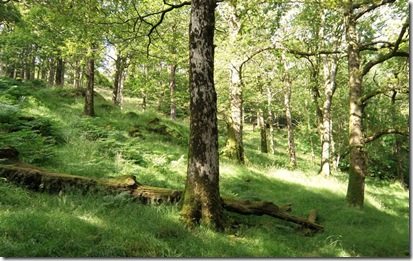
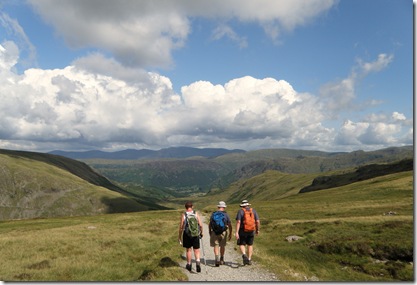
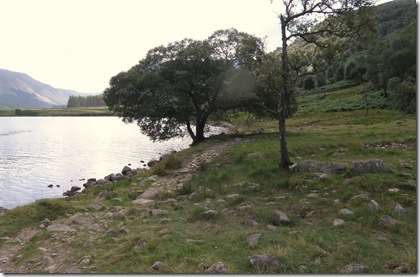
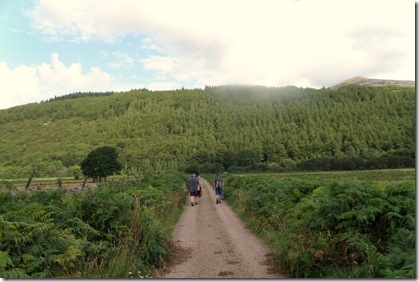
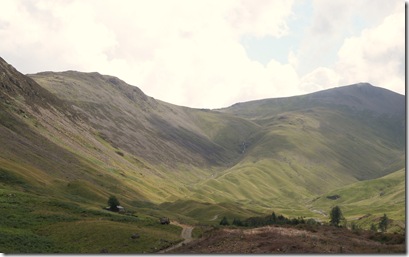
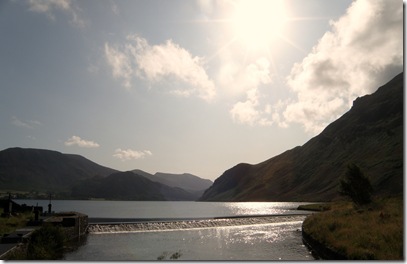
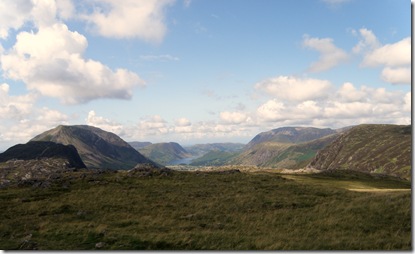
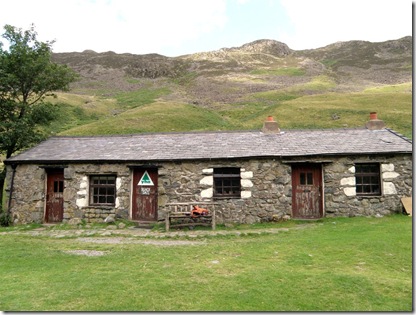
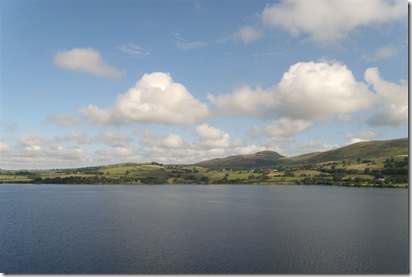
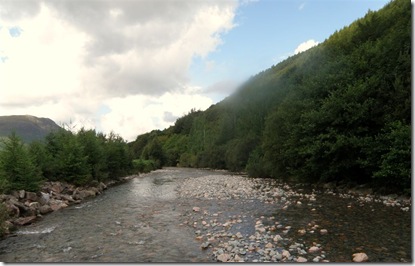
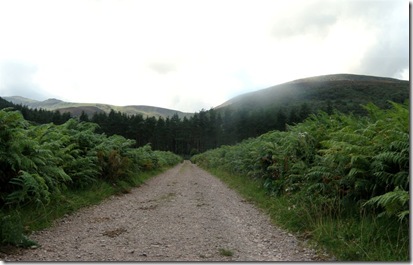
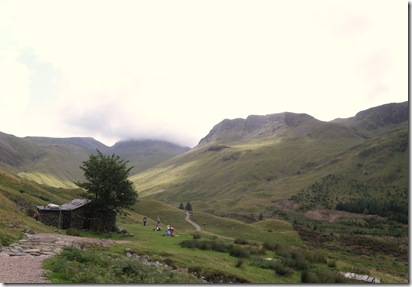
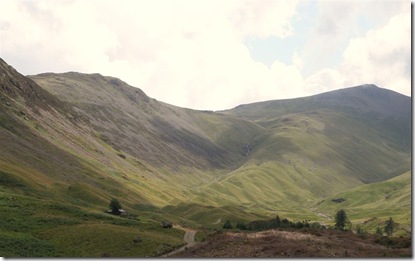
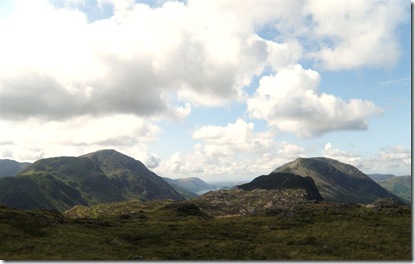
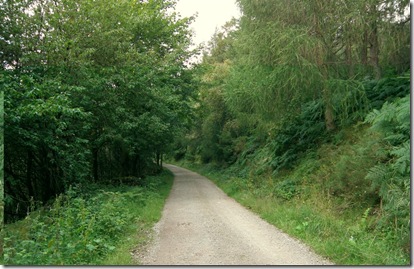



.jpg)